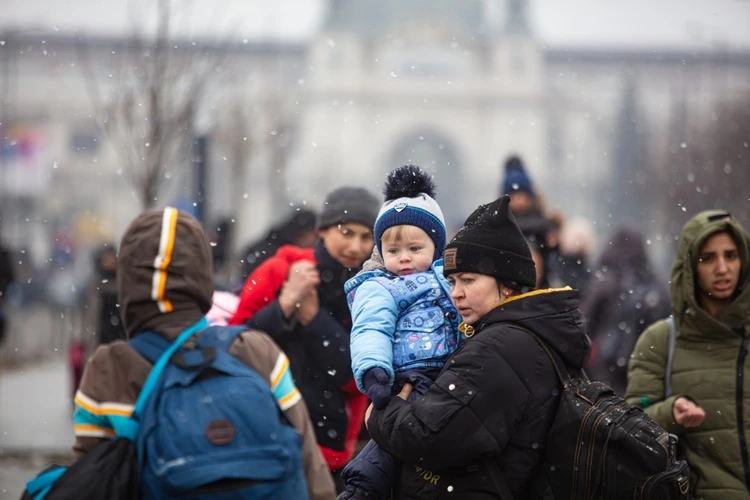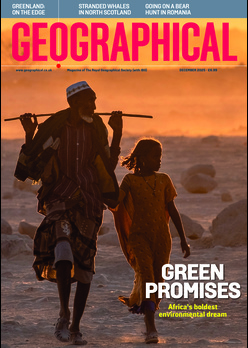
Russia’s invasion of Ukraine has led to the largest population displacement crisis since WWII… but where are Ukrainians going?
By
Nearly a third of Ukraine’s population have been forced to flee their homes due to the Russian invasion of Ukraine.
As of June 2024, a total of 6.9 million Ukrainian refugees were recorded across the world, the largest population displacement crisis since World War II. Of this number, five million have fled to just 10 countries. As the war continues, this number has likely risen.
Related articles:
Here we report the ten countries with the highest number of Ukrainian refugees, in reverse order:
10) Moldova – 128,000
Of the 128,000 Ukrainian refugees estimated to live in Moldova, 80 per cent are women, children or older individuals.
One UN initiative in the country has made significant strides to support refugees, providing important medication, including diabetes and cancer medicines, along with diapers, walking aids, wheelchairs and other assistive devices to vulnerable communities.
9) Slovakia – 164,000

Out of Slovakia’s 164,000 Ukrainian refugees, an estimated 28 per cent are school-aged children. Currently, 11,900 Ukrainian refugee children are enrolled in schools across the country.
In the nation, UNICEF has also helped 11,000 families with monthly cash assistance, providing vital financial support to those who require it. Using a new payment mechanism, UNICEF was also able to help those families without a Slovak bank account, a stipulation that previously prevented funds from reaching people quickly.
8) Italy – 170,000
A range of support has been provided for Ukrainian refugees entering Italy. An Italian NGO, Vis, has allowed almost 900 Ukrainians from Lviv to find temporary accommodation, while the country has also offered temporary protection to those arriving.
This is a short-term measure providing individuals with assistance, such as access to public services, and allows them to work without waiting for permits.
7) Romania – 180,000
Around 74,000 of Romania’s Ukrainian refugees have been granted temporary protection.
Estimates suggest 33 per cent of Ukrainian refugees in Romania are children. Of these, since Russia’s full-scale invasion, almost 5,000 unaccompanied children have arrived in the country.
6) Spain – 224,000

Spain has granted temporary protection to hundreds of thousands of Ukrainian refugees – which currently extends until March 2026 – offering accommodation to 40,597 people since the beginning of the war.
The nation has also helped to integrate many students into its education system: as of September 2024, almost 40,000 Ukrainian students have been enrolled in the Spanish education system, including 1,800 individuals in bachelor’s, master’s and doctoral programmes.
5) UK – 254,000
An estimated 254,000 Ukrainian refugees came to the UK as of June 2024, representing four per cent of the total of Ukrainian refugees recorded across Europe.
In the UK – along with other schemes – The Homes for Ukraine Sponsorship Scheme was developed to allow Ukrainian nationals, along with their immediate family, to come to the country. Those who had successful applications were relocated predominately in Scotland (18 per cent), London (17 per cent) and the South East (17 per cent).
As of early 2024, 70 per cent of adults who arrived under the UK’s two main Ukrainian schemes were women. Around 27 per cent of all arrivals were children under the age of 18.
4) Czechia – 390,000

Almost 400,000 Ukrainian refugees have come to Czechia since the war began. The majority of refugees have found employment in the nation, with less than half considering returning to Ukraine in a survey conducted back in February 2024.
In January 2025, Czechia announced it may establish return centers to help Ukrainian refugees who fled the war return home, with similar centers being prepared in Berlin.
3) Poland – 998,000
In the first several weeks following Russia’s invasion of Ukraine, Poland became the top recipient of Ukrainian refugees. By May 2022, 53 per cent of all people who fled the nation – amounting to 3.5 million Ukrainians – had crossed the border into Poland. NGOs and Polish citizens alike came together to provide support for the influx of individuals entering the country.
Poland also enforced a law which gave Ukrainians temporary protection status, allowing them to have the same access to public funded services as Polish individuals, including employment rights and business ownership.
Out of any country in Europe, Poland currently has the highest employment rate of Ukrainian refugees – standing at 62 per cent as of 2023.
2) Russia – 1.22 million
While some Ukrainians have reportedly voluntarily moved through Russia as a means of getting to the European Union, other reports have surfaced regarding forcible transfers of Ukrainians to Russia or Russian-occupied regions.
According to the Center for Strategic and International Studies, many of those forcibly deported are from eastern Ukraine, particularly the Mariupol and Kharkiv regions.
1) Germany – 1.24 million

Hosting the largest number of Ukrainian refugees out of any nation in the world is Germany. Two-thirds of these refugees arrive from regions of Ukraine severely impacted by the war, such as eastern Ukraine, Kyiv and southern Ukraine.
The large majority of Ukrainian refugees here are women (80 per cent), with many (77 per cent) fleeing without a partner, 48 per cent with minor children, and 12 per cent with a partner and minor children.
According to a survey conducted by the Institut für Arbeitsmarkt (Institute for Employment Research), despite few Ukrainians knowing the German language well (4 per cent), half of all respondents are already attending a German course.




